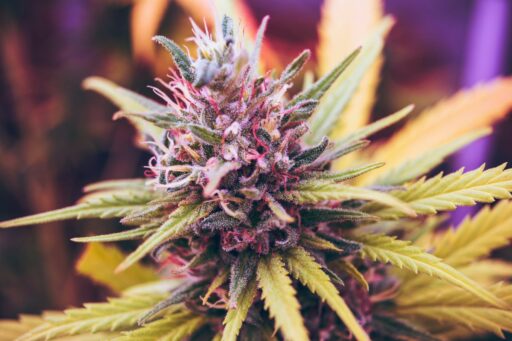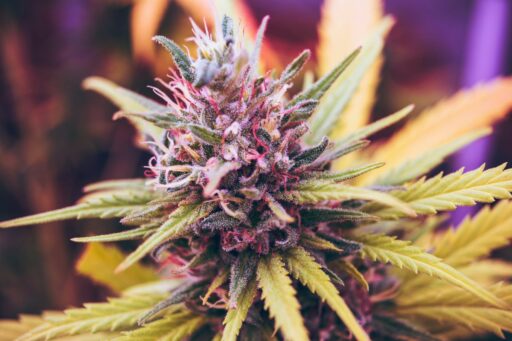While marijuana has become increasingly accessible across the United States, its legal status remains a contentious issue at the federal level. Despite a patchwork of state laws permitting medical and recreational use, cannabis continues to be classified as a Schedule I drug under federal law, indicating a high potential for abuse and no accepted medical use. This dichotomy between state and federal legislation has significant implications for enforcement, research, business operations, and the push towards decriminalization and potential legalization. This article delves into the complexities of current U.S. cannabis laws and explores the future of federal cannabis legislation.
Key Takeaways
- Cannabis remains a Schedule I drug under federal law, reflecting a stance of high abuse potential and no medical value despite state-level legalization efforts.
- The Department of Justice has fluctuated in its enforcement policies, at times allowing states to operate their cannabis programs with minimal federal interference.
- Conflicting state and federal laws create challenges for cannabis businesses, particularly in areas of banking, financing, and taxation.
- A growing number of states are decriminalizing cannabis, which reduces penalties but does not equate to full legalization, influencing the national conversation on policy.
- Advocacy, public opinion, and state-level reforms are driving the momentum towards potential federal decriminalization or legalization, but significant obstacles remain.
The Federal Stance on Cannabis: Legal Status and Classification

The Controlled Substances Act and Marijuana’s Schedule I Placement
Since its inception in 1971, the Controlled Substances Act (CSA) has placed marijuana in Schedule I, the most restrictive category, which is reserved for substances with a high potential for abuse, no accepted medical use, and a lack of safety under medical supervision. This classification has been a significant barrier to cannabis research and reform.
The Schedule I status of marijuana has not only stifled scientific inquiry but also amplified legal discrepancies as states move forward with their own cannabis policies.
In a historic move, President Biden called for a review of marijuana’s scheduling in October 2022, signaling a potential shift in federal policy. The Department of Health and Human Services’ subsequent recommendation to reclassify marijuana to Schedule III acknowledges the drug’s lower potential for abuse and accepted medical use, aligning with the criteria for less restrictive schedules.
The debate between rescheduling and descheduling marijuana continues to shape the discourse on federal cannabis reform. While descheduling would align marijuana with alcohol and tobacco, rescheduling could ease some legal conflicts in the interim.
The Role of the Department of Justice and Enforcement Policies
The Department of Justice (DOJ) plays a pivotal role in the enforcement of federal cannabis laws. In 2013, a significant shift occurred when U.S. Deputy Attorney General James M. Cole issued a memo, known as the Cole Memo, which indicated that the DOJ would not prioritize the enforcement of federal marijuana laws in states that had legalized its use. This policy change was a response to the evolving landscape of state-level cannabis legalization and aimed to focus federal resources on more pressing concerns.
Law enforcement agencies have since adjusted their practices, with a notable decrease in cannabis-related arrests and police interactions. This reallocation of resources has allowed for a greater emphasis on public safety and regulatory compliance within the burgeoning legal cannabis industry. The DOJ’s stance has also influenced how law enforcement oversees licensing, distribution, and public safety measures related to cannabis.
Despite these shifts, the legal limbo continues to pose challenges. A recent call to action by Congressional lawmakers urges the Attorney General to issue ‘overdue’ marijuana guidance, highlighting the ongoing tension between state reforms and federal law. The absence of clear federal guidelines remains a point of contention, with the current situation deemed ‘unacceptable’ by some legislators.
Implications of Federal Illegality on Research and Medical Use
The federal classification of marijuana as a Schedule I substance has significant implications for research and medical use. Federal restrictions create barriers to conducting comprehensive studies, limiting the understanding of cannabis’s potential benefits and risks. This classification also affects the availability of medicinal cannabis, influencing the landscape of cannabis research.
- Federal scheduling complicates the approval process for new cannabis-based medications.
- Researchers face challenges in obtaining cannabis for study purposes.
- The legal risk associated with cannabis research deters potential funding sources.
The intricacies of drug scheduling in relation to cannabis remain a pivotal point in the ongoing discussions about legalization and its implications.
In states where medical marijuana is illegal, patients have limited access to FDA-approved cannabis medications. These are restricted to a narrow set of indications, such as chemotherapy-induced vomiting and certain types of seizures. The scarcity of active clinical trials means that cannabis has no clear pathway to federal approval for broader medical use.
State-Level Cannabis Reforms and Federal Law Conflicts

Overview of State Legalization Efforts for Medical and Recreational Use
As of March 2024, the landscape of cannabis legalization across the United States has seen significant changes. Twenty-four states and the District of Columbia have embraced full legalization for both medical and recreational use, marking a substantial shift in public policy and social attitudes towards marijuana.
In addition to these, 14 states have passed laws permitting marijuana for medical purposes only. This patchwork of state-level reforms reflects a growing trend towards the acceptance of cannabis, despite its federal classification as a Schedule I substance.
The movement towards legalization at the state level has been driven by a variety of factors, including public opinion, economic incentives, and a reevaluation of the social and legal implications of cannabis prohibition.
The following table summarizes the current state of legalization:
| State | Medical Use | Recreational Use |
|---|---|---|
| Total States | 38 | 24 |
Key takeaways from these reforms include the reallocation of law enforcement resources, generation of tax revenue for public services, and the need for government oversight to ensure product safety and public health. These changes also pose challenges for border control and require careful navigation of the discrepancies between federal and state employment laws.
The Impact of State Policies on Federal Enforcement
The evolving landscape of state-level cannabis legalization has necessitated a reevaluation of federal enforcement policies. Federal agencies, including the Department of Justice, have issued guidance to navigate the complex interplay between state and federal laws. This has led to a shift in law enforcement focus, with a greater emphasis on regulating the legal cannabis market for compliance and safety.
- Legalization shifts law enforcement priorities and resources.
- Tax revenue from cannabis sales funds public services.
- Border control faces challenges due to conflicting laws.
- Government oversight ensures product safety and public health.
- Employment laws require balancing federal and state regulations.
The Supremacy Clause underscores the primacy of federal law, yet state marijuana laws continue to challenge this hierarchy, creating a dynamic and often conflicting legal environment.
Case Studies: How States Navigate Federal Restrictions
As states continue to reform their cannabis laws, they often find themselves at odds with federal regulations. The Supremacy Clause of the United States Constitution plays a critical role in this dynamic, as it establishes that federal law generally takes precedence over state law. This has led to a complex interplay between state-level legalization and federal prohibition.
In practice, states have adopted various strategies to navigate these federal restrictions. Some key approaches include:
- Shifting law enforcement priorities to focus on more pressing issues, thereby tacitly allowing state-legal cannabis activities to continue.
- Utilizing tax revenue from cannabis sales to fund public services, which can indirectly support the industry.
- Implementing government oversight to ensure product safety and public health, despite the lack of federal guidance.
- Balancing employment laws to accommodate both federal and state regulations, which is particularly challenging for businesses operating in multiple states.
While states have made significant strides in cannabis reform, the federal Schedule I classification of marijuana continues to create barriers. This classification affects everything from law enforcement to taxation, and even border control.
The table below illustrates the pros and cons of state-level cannabis legalization in the context of federal restrictions:
| Pros | Cons |
|---|---|
| Protects small businesses | Limits industry capital |
| Fosters local opportunities | Delays industry growth |
| Reduces federal enforcement risk | Legal challenges from out-of-state businesses |
These case studies reveal the delicate balance states must strike to foster a thriving cannabis industry while contending with federal law.
Financial and Business Implications of Federal Prohibition

Challenges for Cannabis Businesses in Banking and Financing
The federal prohibition of marijuana under the Controlled Substances Act has created a complex and often contradictory legal and regulatory environment for businesses operating in this sector. Cannabis businesses are grappling with significant challenges, including limited access to banking services, high tax burdens, and the risk of federal prosecution.
Revenue Code Section 280E imposes a heavy tax burden on cannabis businesses, disallowing the deduction of ordinary business expenses. This results in an effective tax rate that is much higher than that of other industries.
The banking challenges stem from financial institutions’ reluctance to service state-compliant cannabis companies due to the potential legal repercussions. This has led to a reliance on cash transactions, which increases the risk of theft and complicates financial management. Solutions such as cryptocurrency and blockchain technology are being explored to circumvent these issues.
- Federal regulations and policies, including the Cole Memorandum and FinCEN guidance
- State-level regulations and policies, creating a patchwork of marijuana laws
- Interstate commerce and money transfer issues
- Cybersecurity and fraud prevention in a cash-intensive industry
Taxation and Revenue Collection in the Cannabis Industry
The taxation of cannabis presents a complex challenge for states that have legalized its use. Balancing revenue generation with effective industry regulation is a critical aspect of cannabis taxation policies. The potential for tax revenue from cannabis sales is significant, with funds often earmarked for public services such as education, healthcare, and drug prevention programs.
However, the actual collection of cannabis tax revenue can fall short of expectations. For instance, Buffalo’s experience highlights the unpredictability of these revenues; the city budgeted for over $3 million but collected just around $66,000, a mere fraction of the anticipated amount. This underscores the need for careful financial planning and realistic projections when relying on cannabis taxes.
The diversity of taxation policies across different states adds another layer of complexity to the industry. Each state’s approach can be as varied as the cannabis strains they regulate, requiring a nuanced understanding of local markets and consumer behavior.
Ultimately, the goal is to strike a delicate balance between generating sufficient tax revenue and maintaining a regulated market that discourages illegal activity while supporting legitimate businesses.
Interstate Commerce and Federal Drug Trafficking Laws
The intersection of state legalization and federal prohibition creates a complex landscape for interstate commerce involving cannabis. Federal law prohibits the transportation of marijuana across state lines, even between states where cannabis is legal. This restriction poses significant challenges for businesses operating in multiple states and stifles the growth of a national cannabis market.
- Federal drug trafficking laws are enforced at border checkpoints, where state-level legalization holds no sway.
- Businesses must navigate a labyrinth of regulations to remain compliant with both state and federal laws.
- The Controlled Substances Act (CSA) continues to classify marijuana as a Schedule I drug, complicating legal and financial transactions.
People serving longer sentences in federal prison for trafficking marijuana also face disparities in sentence lengths due to mechanisms like compassionate release, which are not uniformly applied.
The clash between federal and state laws is not just a legal conundrum but also a practical one for those involved in the cannabis industry. As states continue to reform their cannabis laws, the pressure mounts on the federal government to reconcile these differences and create a coherent national policy.
Decriminalization and Its Effects on Cannabis Policy

Understanding Decriminalization and Its Distinction from Legalization
Decriminalization of marijuana refers to the reduction of legal penalties associated with certain marijuana-related offenses, typically for possession of small amounts. Decriminalization does not equate to legalization, which would allow for the regulated sale and use of cannabis. Decriminalization aims to lower the consequences for minor infractions to a civil penalty, akin to a traffic violation, rather than a criminal charge.
Decriminalization efforts often focus on reducing the burden on the criminal justice system and mitigating the long-term impacts on individuals’ lives.
While legalization creates a legal framework for cannabis, including its cultivation, distribution, and sale, decriminalization simply lessens the severity of penalties. The following list highlights key differences:
- Legalization permits a regulated market; decriminalization does not.
- Legalization allows for government oversight and taxation; decriminalization typically does not.
- Legalization can lead to shifts in law enforcement priorities; decriminalization mainly alters penalty structures.
States that have decriminalized marijuana have done so to various degrees, with some removing the possibility of jail time for small amounts and others making it a civil infraction.
State Decriminalization Measures and Their Impact
Decriminalization of marijuana at the state level has led to a notable shift in law enforcement practices and legal outcomes for individuals. Decriminalization typically reclassifies certain small amounts of marijuana possession from criminal to civil offenses, reducing the burden on the criminal justice system and the individuals involved.
- Hawaii, Louisiana, Mississippi, Nebraska, New Hampshire, North Carolina, and North Dakota have enacted decriminalization measures, which vary in the specifics but generally eliminate the possibility of jail time for small, personal-use amounts.
The impact of these measures is evident in the significant decrease in marijuana-related arrests, as studies using data like the National Incident Based Reporting System (NIBRS) have shown.
Law enforcement agencies have had to adapt to these changes, shifting their focus from criminal enforcement to regulatory oversight of the legal cannabis market. This has implications for resource allocation and the prioritization of law enforcement activities.
The Potential Path to Federal Decriminalization
The journey towards federal decriminalization of marijuana is complex and multifaceted. Federal agencies, including the FDA, play a crucial role in shaping the landscape for potential regulatory pathways. Recent statements from the FDA indicate new steps to advance the agency’s evaluation of cannabis-containing and cannabis-derived products, hinting at a more nuanced approach to federal regulation.
The shift in federal enforcement priorities and the increasing number of states decriminalizing marijuana suggest a gradual move towards a more lenient federal stance.
While decriminalization differs from legalization, it represents a significant policy shift that reduces penalties for possession of small amounts of marijuana. This change is often seen as a step towards full legalization. The following list outlines key factors that could influence the path to federal decriminalization:
- Public opinion and advocacy for change
- Legislative actions and congressional support
- Legal precedents and state-level reforms
- Research and evidence on marijuana’s effects and benefits
The Future of Federal Cannabis Legislation

Pending Legislation and Congressional Actions
The landscape of federal cannabis legislation is dynamic, with several bills under consideration that could significantly alter the current legal framework. The SAFE Banking Act and The Marijuana Opportunity Reinvestment and Expungement (MORE) Act are two prominent pieces of legislation that have garnered attention and support.
- The SAFE Banking Act aims to provide legal cannabis businesses with access to banking services, a critical step in legitimizing and stabilizing the industry.
- The MORE Act seeks to decriminalize marijuana at the federal level, expunge past convictions, and invest in communities disproportionately affected by the war on drugs.
The interplay between state and federal legislation continues to shape the discourse on cannabis policy. Senate Majority Leader Chuck Schumer has expressed intentions to amend existing proposals to include measures for state-level cannabis expungements and protections for gun rights of marijuana consumers. This indicates a growing recognition of the need to harmonize state and federal laws, and to address the broader implications of cannabis legalization.
Advocacy and Public Opinion on National Legalization
The tide of public opinion on marijuana legalization has seen a significant shift, with a Gallup poll in 2023 reporting that 70% of adults support legalization. This marks a substantial increase from the 2000 figure, reflecting a changing societal perspective.
Public support varies across different demographics and political affiliations:
- Republicans and GOP-leaning independents: 42% support legalization for both medical and recreational use.
- Democrats and Democratic leaners: 72% support legalization for both uses.
- Hispanic and Asian Americans: 45% support for both medical and recreational use.
- Black and White adults: 65% and 59% support, respectively.
The growing consensus among Americans for legalizing marijuana underscores the potential for policy shifts at the federal level. The advocacy for legalization is not just a social movement but also a reflection of the public’s desire to see changes in law enforcement priorities, public health initiatives, and the allocation of tax revenues.
The advocacy efforts are not only rooted in public opinion but also in the practical implications of legalization, such as the reallocation of law enforcement resources, the generation of tax revenue for public services, and the need for government oversight to ensure product safety.
Predictions and Implications for Federal Policy Changes
As the landscape of cannabis legislation evolves, predictions about federal policy changes are increasingly becoming a focal point of discussion. The potential rescheduling of marijuana from Schedule I to a lower classification could lead to a cascade of effects across various sectors.
- Tax Revenues: The reclassification could bolster tax revenues, which may be allocated to public health initiatives and mental health programs.
- Public Health: A shift in policy could drive interventions for Cannabis Use Disorder and support educational campaigns on responsible use.
- Employment Laws: Changes in federal cannabis policy will necessitate a reevaluation of employment laws to address the complexities introduced by state-level legalization.
The implications of such a shift are not well understood, yet they are crucial to the future of federal cannabis policy.
While the implications for employment laws and public health are significant, the broader impact on criminalization, research, and public opinion cannot be overlooked. The upcoming legislative sessions may provide clearer insights into the direction of federal cannabis reform, reflecting the growing public and congressional attention to the issue.
Conclusion
In conclusion, the legal status of cannabis in the United States remains a complex and evolving issue. Despite the widespread legalization at the state level for both medical and recreational use, marijuana continues to be classified as a Schedule I drug under federal law, indicating a high potential for abuse and no accepted medical use. This federal classification creates a dichotomy with state laws, leading to a regulatory conundrum where states have taken varied approaches to decriminalization and legalization. Efforts like Michigan’s HR 151 and California’s financial services resolution reflect the growing call for federal clarity. As the landscape of cannabis laws continues to shift, it is clear that a national consensus on marijuana legalization is still on the horizon, with significant implications for law enforcement, taxation, and government regulation.
Frequently Asked Questions
Is marijuana federally legal in the United States?
No, marijuana is still illegal under federal law and is classified as a Schedule I drug, indicating a high potential for abuse and no accepted medical use.
How do federal and state marijuana laws interact in the U.S.?
There is a significant clash between federal and state laws. While marijuana remains illegal at the federal level, many states have legalized it for medical and/or recreational use, leading to a complex regulatory landscape.
What is the Controlled Substances Act (CSA), and how does it affect marijuana?
The CSA is a federal drug policy that classifies drugs into schedules based on their potential for abuse and medical value. Marijuana is listed as a Schedule I drug, making its production, distribution, and possession federally illegal.
What was the significance of the Cole Memo?
Issued in 2013 by Deputy Attorney General James M. Cole, the memo indicated that the Justice Department would not prioritize enforcement of federal marijuana laws in states that have legalized marijuana, as long as they maintain strong regulatory systems.
What challenges do cannabis businesses face due to federal prohibition?
Cannabis businesses struggle with banking and financing due to federal illegality, as well as taxation issues and restrictions on interstate commerce.
What is the difference between decriminalization and legalization of marijuana?
Decriminalization refers to reducing the penalties associated with marijuana possession, typically for small amounts, whereas legalization permits the sale and consumption of marijuana under regulated conditions.





